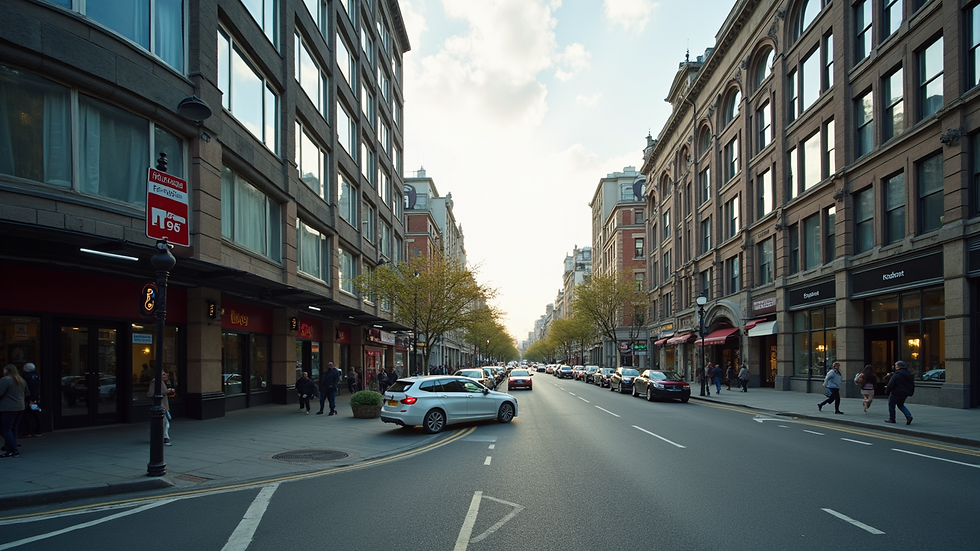£120m Newcastle Sidings Regeneration: A Strategic Investment in Urban Renewal
- Michael Ghobrial

- Aug 19
- 4 min read
The approval of £120 million for the Newcastle sidings regeneration project marks a significant milestone in urban regeneration and rail infrastructure development in the UK. This initiative not only aims to enhance Newcastle’s transport links but also serves as an essential component of brownfield redevelopment in the region. This blog post will explore the project highlights, discuss the delivery partners and key stakeholders involved, and delve into the core technical aspects of this ambitious project.

Project Highlights of the Newcastle Sidings Regeneration
The Newcastle sidings regeneration project is poised to transform an under-utilised railway area into a vibrant hub that contributes to the city’s future growth. One of the key highlights of this project is its alignment with Newcastle's broader strategic objectives, aimed at fostering economic resilience and enhancing connectivity.
The regeneration will offer a multi-modal transport hub that integrates various transport modes, including rail, cycling, and walking. The plans include not only the enhancement of existing rail services but also the introduction of new offerings to accommodate the increasing demand for efficient transportation in the region. By addressing these needs, the project seeks to improve overall commuter experience and support sustainable travel options.
In addition to transport improvements, the project also aims at creating new public spaces and facilities that cater to local communities. This aspect of the scheme aligns with the UK Government's commitment to advancing urban regeneration projects that uplift lives and communities across the nation.
Delivery Partners and Key Stakeholders
The successful delivery of the Newcastle sidings regeneration project will rely on strong collaboration between various stakeholders. At the forefront are key players such as Network Rail, which is integral in enhancing rail infrastructure, and local government bodies that play a significant role in planning and executing urban developments.
Local Authorities: Newcastle City Council will support the execution of the plans, ensuring all aspects comply with local regulations and sustainability goals. Their involvement is crucial in addressing resident concerns and community engagement during the project's progression.
Train Operating Companies: Companies like Northern Trains will benefit from the cleared sidings, allowing for improved services and more efficient train timetables.
Investors: Public-private partnerships will attract considerable investment, empowering the execution of this large-scale project without imposing undue stress on public finances. These investors, which could include local businesses and private equity firms, will help facilitate the infrastructure improvements necessary for the regeneration.

Technical Aspects of Rail Infrastructure Enhancement
The Newcastle sidings regeneration is underpinned by technical expertise that reflects best practices in contemporary construction and urban planning. The project involves various technical elements to ensure that it adheres to industry standards and meets the demands of modern rail transport.
One significant technical aspect is the integration of smart technology within the rail systems. This includes advancements such as digital signalling, which facilitates safer and more efficient train operations, thus increasing capacity whilst reducing potential delays.
Furthermore, the regeneration will focus on sustainable practices, such as eco-friendly materials and methods that minimize environmental impacts. These methods could include the recycling of existing infrastructure and the incorporation of green spaces that enhance biodiversity within the urban environment.
The commitment to adhering to Transport for London's (TfL) design principles is another example of how this project will align with national standards, ensuring that the regeneration respects both functional and aesthetic qualities.
The Role of Brownfield Redevelopment
Brownfield redevelopment stands as a key component of the Newcastle sidings regeneration. As the existing site is an under-utilised railway siding, transforming it into a productive urban area is an exemplary model of how cities can repurpose land previously reserved for industry.
By converting these brownfield sites, Newcastle City not only reduces the need to expand into greenfield areas, thereby preserving natural landscapes, but also fosters economic activities that lead to job creation. Such transformation aligns with wider UK construction projects aimed at achieving sustainable urban growth within existing urban frameworks.
In its latest report, the UK Government emphasises the importance of brownfield redevelopment, highlighting its potential to support housing development, industrial rebirth, and social amenities, helping to revitalise local economy all while ensuring efficient land use.

Future Prospects for Urban Regeneration in the UK
The Newcastle sidings regeneration project stands as a beacon for future urban regeneration initiatives. As demonstrated, the collaboration between various stakeholders, emphasis on brownfield redevelopment, and incorporation of advanced technologies can lead to innovative solutions that meet both current and future demands of urban living.
As urban centres across the UK grow, the challenges of transport and housing will necessitate more such comprehensive regeneration projects. The Newcastle project can serve as a case study for effective strategies in managing urban density while maintaining quality of life for residents.
Additionally, aligning such projects with sustainability goals will ensure long-term viability, not only economically but also environmentally. With the success of the Newcastle sidings regeneration, similar projects in cities across the UK could gain momentum, thus fostering a national trend towards sustainable urban renewal.
In summary, the investment in Newcastle’s railway infrastructure through this £120 million regeneration initiative signals an important step forward in modernising the region’s transport capabilities, improving local economies, and contributing to the overall growth of urban spaces across the UK. The successful execution of the project hinges on well-thought-out collaboration between public and private entities, ensuring that the benefits of urban regeneration reach those who matter most – the community.









